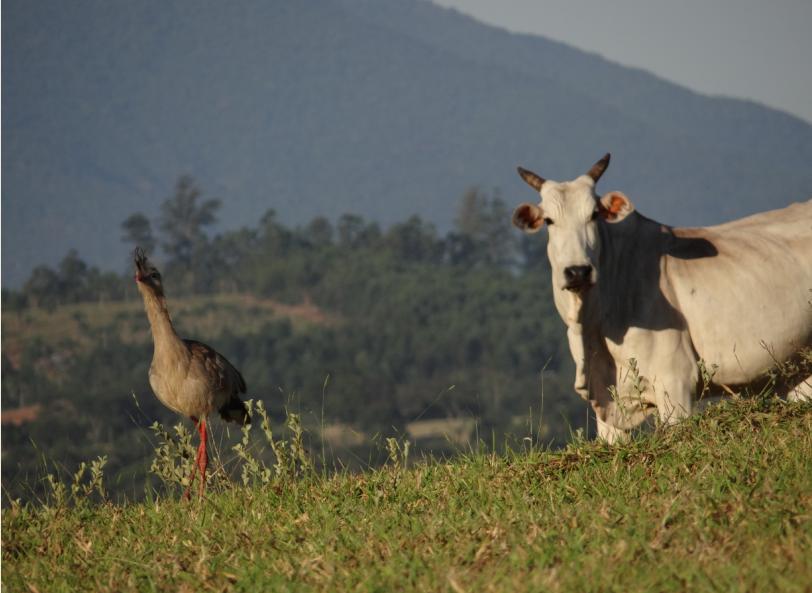Andrea Larissa Boesing
This project has three central objectives to:
(1) quantify how changing forest cover impacts avian diversity,
(2) if and how these changes translate into altered pest control values, and
(3) determine the overall impact of avian spittlebug predators on pasture quality and feeding preferences of bird predators.

Cariama cristata with the cattle in the pasture.
Recent changes to the Brazilian Forest Code threaten to permit further conversion of the already endangered Atlantic Forest. A significant proportion of the converted areas of Atlantic Forest are in cattle pasture land-use, and these areas are typically very susceptible to pest infestations; spittlebugs (Homoptera, Cercopidae), being the most important economic pest, generating losses of between 10-100 percent of the areal extent of pastures and an estimated annual loss of more than US$ 800 million across Brazil. While some bird species have been indicated as potential natural enemies of spittlebugs, no data currently exist on the potential of birds to provide pest regulation in cattle pastures.
The proposed work will be conducted in partnership with private landowners, within 15 landscapes in the Serra da Cantareira region of São Paulo State, Brazil. These landscapes have been selected to range from 10 to 60 percent forest cover, has 1250 ha in size, spaced a minimum of 4km apart, and have their non-forested areas dominated by cattle pasture. To investigate the changes on avian biodiversity across all 15 landscapes, I will use a series of point counts (replicated four times). To verify the potential of birds to control spittlebugs I will establish a line with five mist nets in the same sites where each point count is performed, during four days in the peak of spittlebug infestation. Birds caught in these nets will be non-invasively sampled to obtain both faecal samples for diet analysis (providing information on the species-identity of avian spittlebug predators), and non-invasive biological samples of nail and feathers (providing information on if birds forage in pasture or forest habitats, via isotope analysis). This sampling of avian diet will be complemented with spittlebug infestation estimates from pastures, using sweep nets. After it, a series of highly replicated manipulation experiments designed to quantify the per capita contribution of an avian focal group to this pest regulation will be performed.
The results will inform how both landscape and community structure interacts to influence pest control services. Demonstrating and communicating the value of these benefits to private landowners can be an important and successful complement to existing regulatory approaches that incentive forest maintenance. Such approaches require a science-driven understanding of how potential environmental change (e.g. additional forest loss) influence the ecological processes that result in locally-relevant ecosystem services (e.g. crop pest regulation).